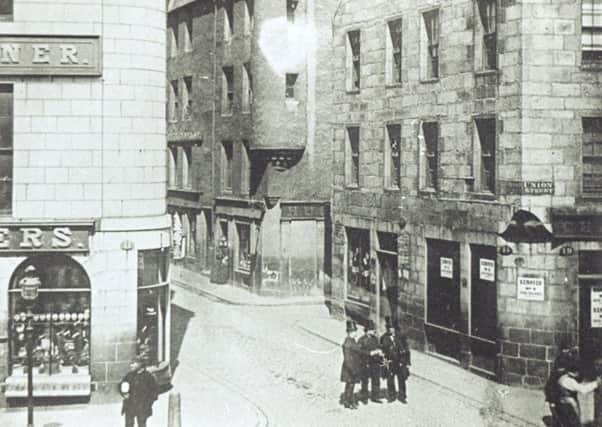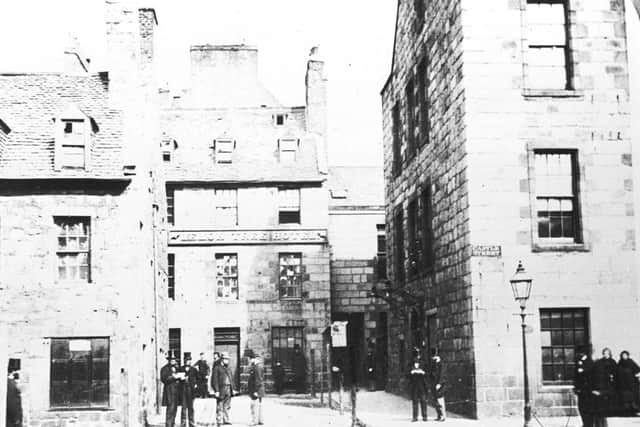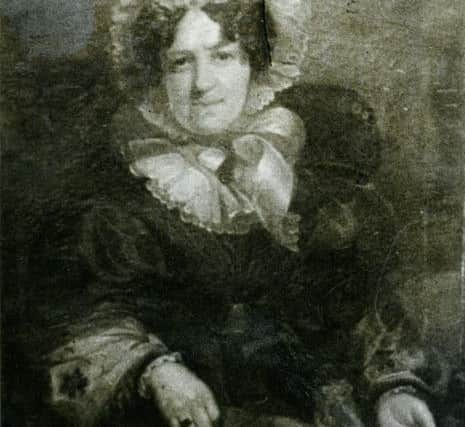The once bustling Aberdeen street that disappeared


But bustling Huxter Row, a street of traders first listed in the 14th century, has long been erased from the city scape.
The narrow wynd, which ran parallel to Union Street and joined with Broad Street, was flattened in the early 1860s as the city centre expanded.
Advertisement
Hide AdAdvertisement
Hide AdToday, all that remains of Huxter Row, which was demolished to make way for the Town House, is a line of cobbles over Union Street to mark its former entrance.


Among the buildings lost was the original Lemon Tree Hotel, the trader’s local and a favourite of business men and visiting judges.
The inn sat in the heart of the action of 19th century Aberdeen, close to Castlegate Market and The New Inn, a Freemason’s pub that was visited by James Boswell and Dr Johnson in 1773.
The city had no fewer that 193 innkeepers and vinters by 1845 but the Lemon Tree Hotel prided itself on being the “oldest commercial and best dining house in Aberdeen”.
Run by the redoubtable Jean Ronald, the tavern was famed for it warm hospitality and food, particularly its creamy finnan haddies – a style of smoked haddock - and “magnificent” partan claws.


Much business of the city was conducted in this cosy inn. It was where the first meeting of Aberdeen Chamber of Commerce took place and where public routs, or auctions, would frequently be held and bankrupted firms dismantled.
Dr Fiona-Jane Brown, a historian with a special interest in Aberdeen, said: “Of course Huxter Row is now lost but it was a very important site in the city.
Advertisement
Hide AdAdvertisement
Hide Ad“Huxter Row really does sound a bit like The Shambles in York with its wooden booths that go back to the 14th century. Huxter is a Shetland word for a peddlar and you can almost picture this bustling street where a lot of trade was done.”
Huxter Row was also home to the city’s first police office with the East Prison and the original Town House surrounding the wynd.


Aberdeen in the mid-1800s was a dynamic maritime city which attracted visiting, wealthy merchants, sailors and those arriving from the countryside looking for work.
The city was experiencing a “churn” of people. Prisons were full and crime was on the rise.
As police sought to keep the streets clear for the respectable classes of the North East, handcarts were introduced to clear drunks away.
Transportation was increasingly used to rid the city of low-level offenders with several cases of women shipped to Van Diemen’s Land for relatively petty crimes, such as stealing table cloths or pinching money from drunk men.


Aberdeen was so crowded around this time that newspaper reports suggested that people pass each other on the left.
Advertisement
Hide AdAdvertisement
Hide AdTo cope with this rapidly expanding city, council leaders had already attempted a mass upgrade of the area surrounding Union Street in 1817.
Many existing buildings were demolished and Aberdeen was bankrupted as property owners demanded high sums for their plots, Dr Brown said.
Traders in Huxter Row survived the expansion of the centre – for another 60 years, at least.
The Lemon Tree was among the businesses to go, along with the Rising Sun, run by Agnes Snowie and a third tavern owned by a Mrs Mortimer. The small traders who had defined the street sold up stock and left.
Mrs Ronald’s retirement party was marked with a “lavish celebration” to which she wore her “amplest black silk gown, a snow-white cap and a hand bag over her arm”.
Following the demolition, The Lemon Tree transferred to a house in St Nicholas Street. The name emerged once again with the Lemon Tree arts venue in West North Street, which sits close to the site of the original Huxter Row hotel.